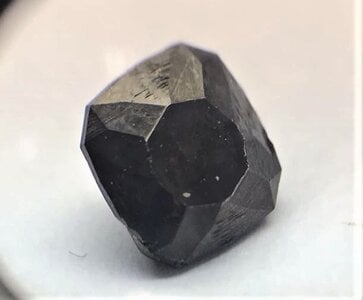- Joined
- Aug 15, 2000
- Messages
- 18,507
"Synova, a Swiss company in which De Beers holds a stake of roughly a third. Synova produces laser technology for cutting hard materials, including diamonds. In 2020, it launched the DaVinci system, which can cut all 57 facets of a round brilliant diamond in one operation."
What this means is one operator can run 6 machines that will laser (burn) the 57 facets on to a diamond. Each machine can produce up to 12,000 carats or diamonds a year.
It is suggested that this will make cutting in country of origin easier to set up.
The planning of the natural rough diamonds will probably still be done in Surat because they have the highly educated and trained math physics dudes that sometimes bash out a hundred options for cutting larger complex rough diamonds.
The polishing will still need to be done on all facets by hand, or perhaps auto (DiaLit etc) machines may still be used for the main facets?
That may mean sending the black burnt but already shaped diamonds to Surat for polishing?
Or importing cutters to train local and indigenous teams.
This could reduce the manufacturing staffing by up to one third and reduce the required footprint.
 www.synova.ch
www.synova.ch
What this means is one operator can run 6 machines that will laser (burn) the 57 facets on to a diamond. Each machine can produce up to 12,000 carats or diamonds a year.
It is suggested that this will make cutting in country of origin easier to set up.
The planning of the natural rough diamonds will probably still be done in Surat because they have the highly educated and trained math physics dudes that sometimes bash out a hundred options for cutting larger complex rough diamonds.
The polishing will still need to be done on all facets by hand, or perhaps auto (DiaLit etc) machines may still be used for the main facets?
That may mean sending the black burnt but already shaped diamonds to Surat for polishing?
Or importing cutters to train local and indigenous teams.
This could reduce the manufacturing staffing by up to one third and reduce the required footprint.
Diamonds.net - The Man Trying to ‘Democratize’ Diamond Cutting
Automation is already having an effect on the diamond industry, whether in the fields of mining, grading or sorting. But the artificial intelligence (AI) that could transform the industry is in the manufacturing sector, where the trade is bracing for a wave of technological solutions that will...
www.diamonds.net
Diamond cutting solutions with water jet guided laser technology
Discover our high-precision and fast laser diamond cutting systems, incorporating Synova’s Laser MicroJet® (LMJ) technology for gem and lab-grown diamonds






300x240.png)